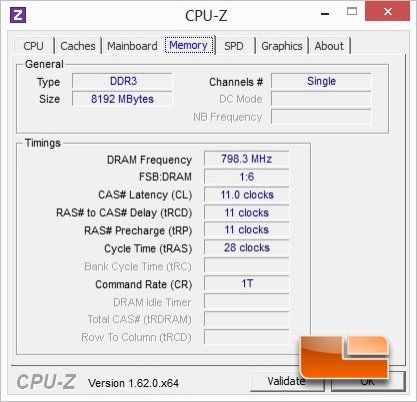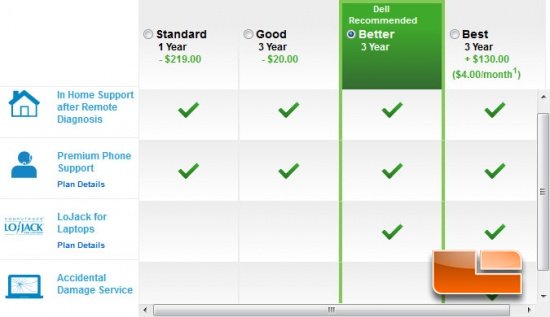Dell XPS 14 Ultrabook Review – 2012 Version
Final Thoughts & Conclusions

When we first got our mitts on the Dell XPS14 we could tell that it had quality running through its veins. As we pulled the system out of the packaging, it just had the feel of a quality build. It didn’t feel flimsy, or overly fragile. In my hands any thing that’s to fragile, usually meets an untimely end! Fortunately we didn’t have to put the physical durability to the test today. I don’t doubt that the XPS14 is durable, but there are a couple of aspects that would concern me in a fall. First is the glass screen. Corning Gorilla glass is great for scratches and usually pretty durable. I have seen Gorilla Glass completely shatter though, all depends how it lands. The only other part that would worry me in a fall is the Seagate 2.5″ hard drive. If you’ve ever dropped a hard drive, you know how frustrating that can be. Now imagine it in a Ultrabook that isn’t really meant to be opened up by the end user. Though, it does only take the removal of a handful of screws to open the Dell XPS14 up and gain access to the drives.
Overall I really like the Dell XPS14, of course there’s good, and not so good aspects of this ultrabook. Starting with the good, it’s an Intel Core i7 3517U processor, 14″ screen, 500GB of storage. At the heart of the Dell XPS14 we have an Intel Core i7 3517U processor. The i7 3517U has two physical cores, plus an additional two threads for a total of four threads. Obviously the i7 3517U isn’t as powerful as a desktop i7, but Dell is aiming for a blend of power and battery life. The 14″ screen has multiple aspects to it. On the positive side, it’s big enough to look at without squinting, the colors are great at the right angle, overall it’s a solid panel. The XPS14 has 500GB of storage which is plenty of storage for an Ultrabook.
The bad (ok, not really bad, but worth mentioning), above I mentioned that the 14″ display has multiple aspects. Well the not so positive in my eyes is the 1600×900 resolution. Personally I would have liked to see the XPS14 have a 1920×1080 (1080P) display, though I know that would also increase the cost. Our system is using Intel SRT, which isn’t as fast as a SSD, nor is it as costly for the price. Everything is a bit of a wash to this point. It’s all about cost vs. performance. What really did throw me for a loop was the Single Channel Memory. A $1499 Ultrabook that doesn’t have dual channel memory, or at least the option for it, just doesn’t seem right.
The performance of the Dell XPS14 was certainly better than the performance we saw a couple of weeks ago with the Cyberpower Zeus M2, at least most of the time. There are a couple of trade offs that Dell made with the XPS14, at least on this particular model. Our XPS14 uses a 500GB traditional hard drive with a 32Gb SSD configured in Intel Smart Response Technology. This gives the Dell XPS14 the overall feel of SSD responsiveness, with the storage space of a traditional hard drive. By using Intel SRT we are able to have the feel of a SSD with the storage we need, without the cost of a 500GB SSD. It’s not quite as fast as using a SSD alone but a 500GB SSD tends to be cost prohibitive for most of us. The other area that actually blew my mind was the memory performance! Sadly it wasn’t in a good way.

The Dell XPS14 is using only a single SODIMM of DDR3 memory. While the 8Gb of DRAM that comes installed in the system is likely enough for most users, we took a pretty serious performance hit when comparing the memory scores between our two systems. The Dell XPS14 aggregate memory performance was just over half the performance of the Cyberpower Zeus M2. The kicker is that we can’t even add a second SODIMM to the system to improve the performance, the XPS14 only has a single SODIMM slot for us to use.
One of the key points, we aren’t relying strictly on the Intel HD 4000 Graphics on the Intel Core i7 3517U. Dell has incorporated a discrete level graphics card in addition to the HD 4000. The NVIDIA GeForce GT 630M features 1GB of GDDR5 memory. The GeForce GT 630M isn’t exactly a beast of a card, but it is certainly better than the Intel HD 4000 graphics. This is evident by the 3DMark 11 benchmark results. The Dell XPS14 and the Cyberpower Zeus M2 system certainly have their differences, 3DMark focus’s on the graphics. In both the ‘Entry’ and ‘Performance’ presets the Dell XPS14 was just about double the scores of the Zeus M2 which relies only on the Intel HD 4000 graphics. So while the GeForce GT 630M isn’t a beast, it will easily improve our experience in some light to moderate gaming.
The ‘Meh’, the Dell XPS14 series has a starting price of $1099. The model we were looking at carries a price tag of $1499, and the top model that has the same specs with the exception of a 512GB SSD is available for $1999. The Dell XPS14 starts out with a 1 year warranty, from there you can increase the warranty to as much as three years. Of course there is a couple of different levels that you can run with.

The Standard 1 year is included, the first level of the three year is $199, the Dell recommended is $219, and the best which includes Accidental Damage Service is $349. Depending on how long you plan on keeping the XPS14 and how easy or hard you are on, you may want to invest in the ‘Best’ just in case you accidentally throw it across the parking lot.
Legit Bottom Line: Ultimately the Dell XPS14 is a rock solid system and didn’t disappoint today. If you’re looking to invest into an ultrabook, the XPS14 would be a great one to get your hands on.

Comments are closed.